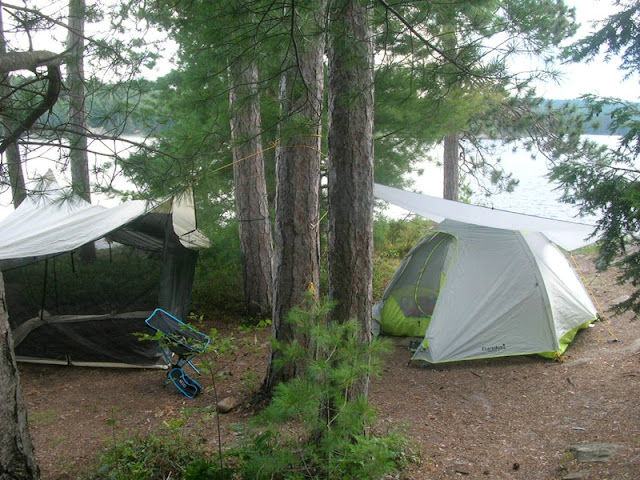Langford Canoe has donated a 16' cedar canvas canoe to raffle off with the benefits going to the
Huntsville Hospital Foundation in Muskoka. We've had to make use of the Hospital's Emergency a few times over the years and it is wonderful facility with very caring staff. This summer being the 100th Anniversary of the suspicious death of Artist
Tom Thomson, Langford has tried to replicate a canoe in the style used in the early 20th century. Thomson is said to have purchased a 2nd grade Chestnut Cruiser in 1915. Normally covered in a dull slate grey paint, the artist mixed in a tube of Cobalt Blue to make his canoe very unique. The devastating fire of 1921 destroyed the Chestnut factory and all the forms and canoes after this period had quite different shapes.
Tom Thomson's canoe circa 1915
I happened to be in Huntsville when I noticed a distinctive "blue-grey" canoe with high curved ends in the window of a local sports outfitter. Given the tight space and other merchandise, I couldn't get a full shot of the boat but managed to capture a few features.
View of the Langford "Tom Thomson" canoe in the window
Once inside I noticed how robustly this canoe was built. Unfortunately, no stats were available and the store staff knew nothing of the boat other than erroneously calling it a "Cedar Strip". A key feature (rarely seen on Canadian boats) are the distinct half ribs added to strengthen the hull. The two ash thwarts are very wide and bulky and coupled with the ash outwales, seats and keel, this will likely be a very heavy duty boat.
Half ribs and wide ash thwarts
Don't believe the early Chestnuts came with babiche seats but Langford decided to go for this rustic style...
Rawhide seats
Pre-fire Chestnuts came in both closed and open gunnelled forms but had a very distinctive narrow deck. Langford decided to use another darker hardwood along with their own commemorative logo...
Langford Deck
The canoe also comes with two painted cherry paddles to match the hull...
Cherry paddles with painted blades
The only Pre-fire Chesnut Cruiser I'm aware of was found by Andre Cloutier of Ravenwood Canoes. He has
documented many of the details of these rare boats and has even built a new form of this historic design. Recently, he
completed the first build and his boat (much closer to Thomson's original) has recently been launched...
Anyway, 1000 tickets at $25 each will be sold and the draw takes place on September 1st. More details found on the local poster below:





























